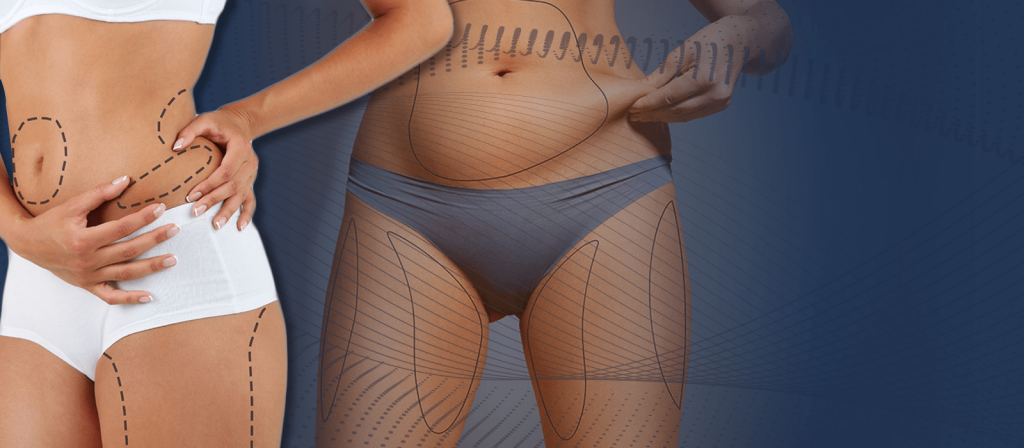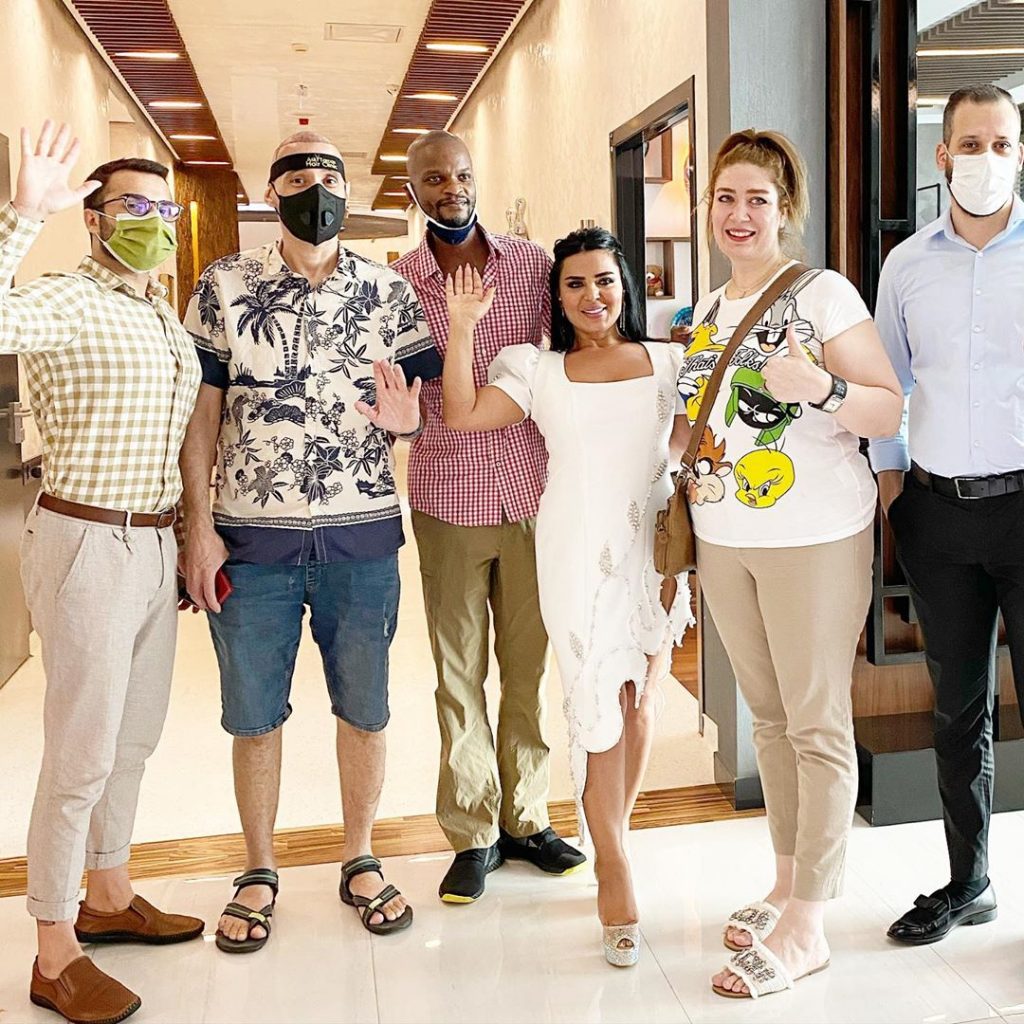
Liposuction is a surgical procedure that breaks down the fat accumulation in diet-exercise-resistant areas of the body and removes it from the body. In other words, it is a surgery to remove fat from certain parts of the body by vacuum technique. It is usually applied to the abdomen, hips, thighs, arms, and neck.
Liposuction slims and reshapes certain areas of the body by removing excess fat deposits and shaping lines. It is performed under general or local anesthesia. If the person is suitable for this surgical procedure and follows the doctor’s instructions before and after, it is a trouble-free operation. However, some complications such as excessive bleeding, which can be seen in any surgery, can have dangerous consequences. For this reason, it should not be rushed about liposuction; surgery should be decided after thorough investigation.


What Are The Liposuction Methods?
There are 4 types of liposuction methods.
- Classical liposuction: Using the power of the surgeon’s hand, a vibration is created at the tip of the cannula. Thus, the fat is separated from the tissue and each other is absorbed and taken out.
- Laser liposuction: Low energy laser waves are used to burn the fat.
- Vaser liposuction: Fats are separated by using ultrasound, sound waves.
- Body jet method: Fats are separated by spraying liquid from the cannula tip.
Stages of Classical Liposuction Surgery
- Fat tissues are removed from the region by the back and forth movements of special metal cannula, which are inserted into the fat tissue through 3-5 mm incisions made at the appropriate points of the liposuction area and connected to the vacuum device with a special hose. These cannulas with a diameter of 2 to 5 mm are blunt at the ends and fat is taken from the holes on the ends. The aim is to eliminate the protrusions made by the excessive accumulation of fat tissues in the aforementioned areas and to make the body contours proportional and consistent, that is, an aesthetic appearance. Liposuction can be done manually with large injectors without using a vacuum device, thanks to the vacuum created by stoppers applied to its pistons.
- Before starting the procedure, a special solution is injected into the adipose tissue. In this way, liposuction can be performed more easily without bleeding. Due to the local anesthetic substance it contains, pain that will occur in the early period after the intervention and during the intervention is prevented. This method is called the “wet technique” or “tumescent technique”. The previously applied dry technique is now completely abandoned. There is also a method called “ultrasonic liposuction” in which the fat is softened first by ultrasonic vibrations and then liposuction is performed. However, the necessity of this method is discussed by the users themselves, and they are also expressed by themselves that they use less and less.
Liposuction surgery is performed under local anesthesia if it is to be performed in single and small areas and under general anesthesia if it is to be performed in large and large areas. Operation time varies between 1 and 4 hours depending on the number and width of the area to be performed.
What Is Laser Liposuction and What Are Its Differences From Classical Liposuction?
Laser lipolysis is a method of directly exploding the membranes of fat cells with diode laser applications. Just like fat removal methods, this method, which provides getting rid of regional fat excess, is also used effectively in removing this looseness especially in areas where skin looseness can be seen, such as under the chin and face. In addition, laser lipolysis can be applied to the armpit of people with sweating problems to prevent excessive sweating.
The main difference between laser lipolysis and liposuction is the way adipose tissue is disposed of. In the liposuction method, fat tissues are vacuumed from the body through cannulas, while in the laser lipolysis method, they are excreted through urine. For this reason, liposuction is preferred in cases where adipose tissue is too high to be excreted in the urine.
What Is Vaser Liposuction and What Are Its Differences From Classical Liposuction?
In liposuction performed with Vaser device, unlike classical liposuction, excess fat in the body is liquefied with the help of ultrasonic sound waves. The liquefied fat is also thrown out with the help of thin cannulas, but there are no grater-style blades at the end of the cannulas as in classical liposuction. Therefore, during the fat removal process, nerves and vessels are not damaged, and after the procedure, much less bruising, swelling, and edema are seen compared to classical liposuction. Heating of the skin occurs with Vaser’s V mode, the ultrasonic probe is circulated under the skin, thus the skin is firmer and the possibility of sagging is reduced.
Since this application will not damage the vessels, bruising and bleeding will be very less. Since the nerves will not be damaged, there will be very little or no pain in the short term and numbness in the future. In this way, the wavy surface appearance that can be seen in the classical liposuction method does not occur.
- Vaser Liposuction, which has a fat selective feature, does not damage nerves and vessels.
- Since there are no grater-style blades in the cannulas used in Vaser Liposuction, the fat is not removed by destroying the nerves and vessels. Therefore, minimal bruising and swelling is observed after surgery.
- Ultrasonic sound waves are used to break down the fat in the body in Vaser Liposuction.
- With the V mode of the Vaser device, the skin is warmed by the circulation of the ultrasonic probe under the skin, thus tightening the skin increases, the possibility of skin sagging is reduced.
What Is Body Jet Lipolysis and What Are Its Differences from Classical Liposuction?
In the liposuction method with body jet, it is sufficient to give a very small amount of liquid under the skin. This increases the surgeon’s decision-making power regarding the outcome during the operation period. In cases where high amounts of fat were required, it was necessary to inject unnecessarily large amounts of liquid and local anesthetic into the body, which could lead to some complications. In the body jet method, the local anesthetic substance used consists of substances that start immediately and are removed from the body in a short time, and are excreted from the body after a long time. This method eliminates the administration of large amounts of local anesthetic agents and the risk of complications.
Who Can Have Liposuction Surgery?
Liposuction is a method that can be applied to anyone who does not have a systemic health problem, who is not pregnant, or who has not given birth. Determining whether the patient is suitable for liposuction surgery depends on the opinion of the doctor who will perform the operation. But generally for liposuction surgery, some tests should be done before liposuction surgery to decide whether people with systemic health problems are suitable for the operation. It can be applied to people with disproportionate fat distribution in their bodies.
Who Can Not Have Liposuction Surgery?
Liposuction cannot be used as a weight-loss method. It is applied to shape the body by removing the remaining fat deposits after losing excess weight. It is suitable for people with a body mass index of 30 and below. We can roughly simplify this to people with a difference in height and weight of 20 units or less. For example, in order for a 160 cm tall person to have liposuction, they must be 80 kg or less.
Liposuction is also not used in cellulite treatment. Because cellulite is an accumulation of fat in the skin. Liposuction is a method of removing fat under the skin. It is not possible to remove this by sucking or any other surgical method. Cellulite does not have a complete and clear treatment. Losing weight, exercising, and some laser-assisted treatments may improve the situation a little.
If you have a weight problem other than regional resistant fats, it will be more appropriate to get rid of your excess weight by applying a controlled diet and sports program, and then apply this method for excess fat that does not go away with diet.
Although age does not constitute an obstacle to this application, it cannot be applied to some elderly patients due to the age-related loss of skin elasticity.
After the Surgery
People who undergo liposuction are removed from the operating room by wearing corsets specially manufactured for this job at the end of the surgery. These corsets prevent bleeding in the liposuction area, prevent blood and fluid accumulation, which we call hematoma and seroma, thanks to the elastic pressure they provide, and contribute to the formation of the skin surface by ensuring that the skin adheres to the base. These corsets should be used for a week without removing them. Then, it is recommended to take it off, take a shower, wash the corset and use it for at least three more weeks. If this period can be extended up to two months, it will be even more beneficial.
Sudden movements should be avoided for the first few days after liposuction surgery is performed, the nutrition program given by the doctor should be followed, unless the doctor says otherwise, a warm shower can be taken 2 days after the liposuction surgery. After liposuction surgery, the patient should not lift weight for a while depending on the condition of the patient and the patient should avoid activities that will force him/her.
In the postoperative period, it is inevitable to see some edema and bruises in and around the liposuction area. This regress substantially within 6-8 weeks. The remaining small amount of swelling regresses more slowly. The final result occurs after an average of six months. Laser vacuum massage and ozone sauna applications, which will be applied starting from the third week after the surgery, make a great contribution to the final result in a shorter time and in a more desired way. These applications show this effect by increasing the blood and lymph circulation of the area and providing tightening of the skin.
Patients who have undergone liposuction surgery are usually observed for 4-6 hours, and if their general condition is stable, they are raised, walked around the clinic, liquid foods are given and if no problems are observed, they are discharged on the same day. Rarely, it may be necessary to be hospitalized for 1-2 days.
It should not be forgotten that having this application does not mean that you will not gain weight again. In order not to gain weight again, it is very important to pay attention to post-operative lifestyle, diet, and exercise. If there is frequent weight gain and loss, the application will not be very successful.
If there are skin sagging in addition to regional fat excess, the existing sagging cannot be recovered with this method. The sagging of the abdominal wall seen in women who give birth cannot be eliminated by liposuction. Besides, this application does not provide getting rid of cellulite.
Is There Any Side Effect?
The common side effects of liposuction are;
Temporary Problems on the Skin: There are sagging and fluctuations in the area where the procedure is performed for a certain period of time. Conditions such as temporary bruising, pain, swelling, and numbness are observed around the treated area.
Temporary Scars: The cannula, which is in the form of a small tube used in the fat removal procedure, causes irritation and minor scars in the areas where the application is made.
Loss of Sensation: Sensation loss occurs in the area where the application is performed, as it is affected not only by fat but also by capillaries.
Dangerous Complications: Fat removal operations with liposuction can rarely result in death. This risk increases if you have problems such as obesity and excess weight. During the operation, high fluid and blood loss may occur. This is an extremely low risk. If blood and fat clots reach your lungs, it can threaten your life. Edema and infection may occur in your lungs. To avoid this situation, antibiotics should be applied before and after the application. Perforation of organs in the abdominal cavity such as the spleen is also among the negative effects.


